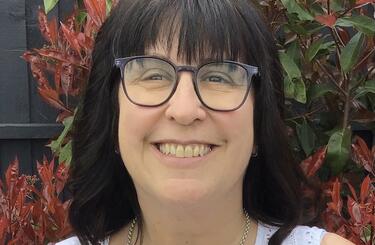
Managing the risks of risk assessments
Progress indicator

Caitlin McArthur, Audit & Compliance Manager at Sodexo, addresses the many challenges around assessing risk at work.
I have had to undertake risk assessments at every level and in each role. As a member of the Sodexo Audit and Compliance team, one of my key responsibilities is ensuring that risk assessments are up to date and, more importantly, effective.
Risk assessing can be a complicated idea and people often struggle with both the concept and the processes. I have found four main challenges in making risk assessments what they should be – a key tool in assuring health and safety.
Challenge one: the ‘tick box’ attitude
I can often see people thinking ‘oh, not this again’ when I bring up the need for risk assessments. It can be difficult to persuade people that risk assessment is more than a form-filling exercise, especially as it usually requires a lot of forms to be filled. Good risk assessments create a priority risk rating that helps work environments focus on critical controls – which can, in some instances, save lives.
All elements of a task need to be assessed. Once, one of our teams carried out a risk assessment on cleaning a hot cabinet but failed to include in the controls the need to allow it to cool first. The cabinet was sprayed with cleaner while still hot and its glass door exploded. This was a reasonably foreseeable risk but it hadn’t been considered.
Challenge two: ‘the management is just trying to cover its backside’ attitude
Often people think risk assessment is done just in case management has to face their own management or insurers. In fact, the risk assessment is the first document I turn to after an incident.
I have investigated accidents where the hazard that caused the accident wasn’t featured in the risk assessment process, even though it was reasonably foreseeable. For example, a member of one team had been badly scalded while liquidising soup – a daily task that was not included in the list of hazards.
On another occasion, I used risk assessment to prove that all the required controls were in place and working but were ignored; although the necessity of ensuring the guard was in place on a meat slicer was clearly stated, it was used without the guard. One of the team lost the end of a finger.
"I can often see people thinking ‘oh, not this again’ when I bring up the need for risk assessments. It can be difficult to persuade people that risk assessment is more than a form-filling exercise, especially as it usually requires a lot of forms to be filled."
Challenge three: problems with understanding the concept
The whole idea of risk assessment is complex and includes some basic maths and probability concepts. However, it offers people genuine insight into good working practices.
I find that people think the likelihood of a risk equates to how often a task is completed. This means that a regular task, such as mopping the floor, ends up with a very high risk rating. However, I did once find a risk assessment where, for the same reason, using a flambé torch was scored lower than cleaning a fridge. The fridge was cleaned every day, but the flambé torch was an exception.
Challenge four: problems with following the process
People have a number of problems with the process but the main one is how to work out the scores. These should always be multiplied, not added. If this is not followed it makes for very interesting risk ratings. If you were assessing bomb disposal using a 1-5 (1 being low) risk-rating matrix, the score could potentially be 5 and 5. Adding these together would be 10, which is a little on the low side for one of the most dangerous of tasks. As an organisation, one of our processes requires hazards that score more than 9 to be subject to a further detailed assessment. When this mistake is made, risks that score 3 and 3 only score 6 when, in fact, they should score nine and therefore require further action.
Assessing Risk
I’m sure that, along with many people, my attitude to assessing risk has changed over the course of my career, through the demands of different roles and learning through experience. At the start of my career, I was definitely more focused on the process. As a manager, I am committed to ensuring a safe workplace, so the risk assessment is a key tool.
Completing the risk assessment process as a fresh-out-of-college employee was an intimidating task. Even then, I was of the opinion that being injured at work was not acceptable, though I am not sure I fully understood the risk assessment process. Later, when training others, I always found it amusing when delegates felt the need to give every hazard a high score, as though entering their facility was surely going to end in death.
While auditing our sites, I also find a ‘too little’ or ‘too much’ approach; some sites miss obvious hazards, and some assess everything, including clingfilm cutters. I also find myself curious as to why some sites have risk assessments for equipment and processes they neither have nor do – evidence of the ‘tick box’ approach in operation.
Benefits of meeting the challenges
It’s important that we assess all reasonably foreseeable risks to reduce the risk of harm, so far as is reasonably practicable. Both the law and our company’s policies take into account that there will always be an element of risk; the question is how it can be managed and maintained at an acceptable level.
Our role is to consider the risk and ensure it is documented, controlled, reviewed and, most importantly, communicated to all concerned, so that everyone fully understands the controls required to keep them safe.
Covid-19 had a real impact on people’s attitude to risk. The risk environment changed for everyone and we all had to re-evaluate our normal practices, in and out of work. It also added a whole new range of risks, such as the risk of infection in large crowds and the various hazards associated with different types of queues and people flows. This has helped significantly in making risk assessment less of a tick-box exercise, as the whole population was actively engaged in assessing Covid risks in everyday tasks. It’s interesting to see that controls such as sanitising stations and screens between customers and staff remain in lots of places.
The risk assessment process should be simple and clear so that it serves a purpose to all and isn’t a document that sits on a shelf gathering dust just to be looked at when the due date or an auditor arrives.
Should an audit be announced?
Is the element of surprise helpful when it comes to conducting an audit? Caitlin McArthur, Audit & Compliance Manager at Sodexo, makes the case against surprising clients with an audit.
The International Quality Awards 2024
This year's awards span eight categories, celebrating the achievements of exceptional quality professionals and auditors across the globe.
Become a member
Take your quality career to the next level by becoming a member of the CQI or an IRCA Certificated Auditor.